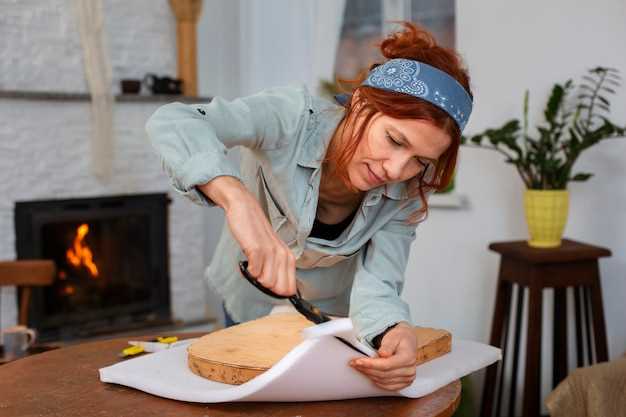
Restoring a classic car can be an incredibly rewarding project, bringing old beauty back to life while creating a perfect balance between nostalgia and functionality. However, many enthusiasts fall into the trap of common restoration mistakes that can not only lead to poor results but may also diminish the vehicle’s value. Understanding these pitfalls is crucial for anyone looking to undertake a successful restoration journey.
One of the primary mistakes is underestimating the importance of thorough planning. Skipping this step often results in disorganized efforts, which can lead to delays and unnecessary expenses. Before starting any repair, it’s essential to have a clear vision and a detailed plan that outlines each phase of the restoration process, ensuring that every component is accounted for.
Another frequent error is neglecting the significance of proper repairs. In the enthusiasm of breathing new life into a classic car, many tend to overlook the quality of materials and techniques used. Utilizing poor-quality parts or cutting corners in repair procedures can compromise not only the aesthetics but also the overall performance of the vehicle. Paying attention to detail and investing in high-quality components will yield far superior results.
Choosing the Wrong Replacement Parts for Classic Cars

When it comes to restoration of classic cars, one of the most crucial factors is selecting the right replacement parts. Using poor quality or incorrect components can lead to significant issues down the line, ultimately affecting the vehicle’s performance and authenticity.
Many enthusiasts are tempted to buy cheaper alternatives or generic parts, but these often do not meet the necessary specifications for classic vehicles. Such decisions can result in subpar repairs, compromising the car’s integrity and possibly leading to more extensive damage over time.
Furthermore, it is essential to consider the history and original specifications of the car. Opting for parts that are not authentic can not only detract from the restoration process but also decrease the car’s value. When restoring classic vehicles, always prioritize OEM (Original Equipment Manufacturer) parts or high-quality reproductions that match the original design and materials.
To avoid these pitfalls, it is advisable to conduct thorough research or consult with experts who specialize in classic car repair. Engaging with knowledgeable sources can guide enthusiasts towards making informed decisions that enhance the overall quality of the restoration.
In summary, ensuring that the right replacement parts are used is paramount in the journey of restoring classic cars. High-quality, authentic components not only facilitate effective repairs but also help maintain the vehicle’s classic appeal and value.
Overlooking Proper Surface Preparation Before Painting

One of the most common mistakes made during a restoration project is overlooking proper surface preparation before painting. Just as a classic car requires meticulous attention before applying a fresh coat of paint, so does any restoration project. Failing to prepare surfaces adequately can lead to disastrous results, affecting both the appearance and longevity of the finish.
Before painting, it’s essential to clean the surface thoroughly to remove dirt, grease, and old paint residues. This step ensures that the new paint adheres properly, providing a smooth and durable surface. Skipping this crucial phase can cause the paint to peel, chip, or lose its luster over time.
In addition to cleaning, surface imperfections such as scratches, dents, or rust should be addressed. Employing sandpaper or a grinder can help achieve a smooth finish, similar to the attention to detail one would give to a vintage car during a restoration. If these flaws are not corrected, they may be magnified once the paint is applied, resulting in an unsatisfactory finish.
Priming is another critical aspect that cannot be overlooked. Applying a suitable primer helps seal the surface and provides better adhesion for the topcoat. Just like in car repair, selecting the right primer for the specific materials involved is key to achieving a flawless final look.
Finally, consider environmental factors before painting. Dust, humidity, and temperature can all influence the final outcome. Restoration success hinges not only on individual techniques but also on creating the optimal conditions for paint application. Taking the time to properly prepare surfaces will lead to a more successful and durable restoration, ensuring that the end product reflects the hard work invested in it.
Neglecting Quality Control Throughout the Restoration Process
One of the classic mistakes in any restoration project is the failure to implement effective quality control measures. This oversight can lead to poor outcomes that not only compromise the integrity of the restoration but also increase costs and prolong timelines. Throughout the restoration process, every phase should be meticulously monitored to ensure that repairs meet the highest standards.
Quality control should begin from the initial assessment of the item or structure being restored. Skipping this step can result in misjudgments regarding the extent of damage or the appropriate methods needed for a successful repair. A thorough analysis allows restorers to create a detailed plan that addresses all issues, ensuring that classic restoration techniques are utilized effectively.
During the actual repair phase, it is essential to examine materials and methods continuously. Substandard materials may seem cost-effective upfront but can lead to deterioration and the need for further repair down the line. Restorers must ensure that the materials used are appropriate for the type of restoration, aligning with both aesthetic and structural integrity.
Regular inspections should also be conducted at various stages of the restoration process. This practice not only highlights potential problems early but also reinforces the importance of craftsmanship. Failing to monitor the work closely often results in poor practices becoming ingrained, leading to irreversible mistakes that compromise the entire project.
In conclusion, neglecting quality control throughout the restoration process can undermine even the most well-planned projects. Employing rigorous quality assurance measures will mitigate risks, ensuring that repairs are durable and of the highest standard, thus preserving the value and significance of the restored item or structure.




